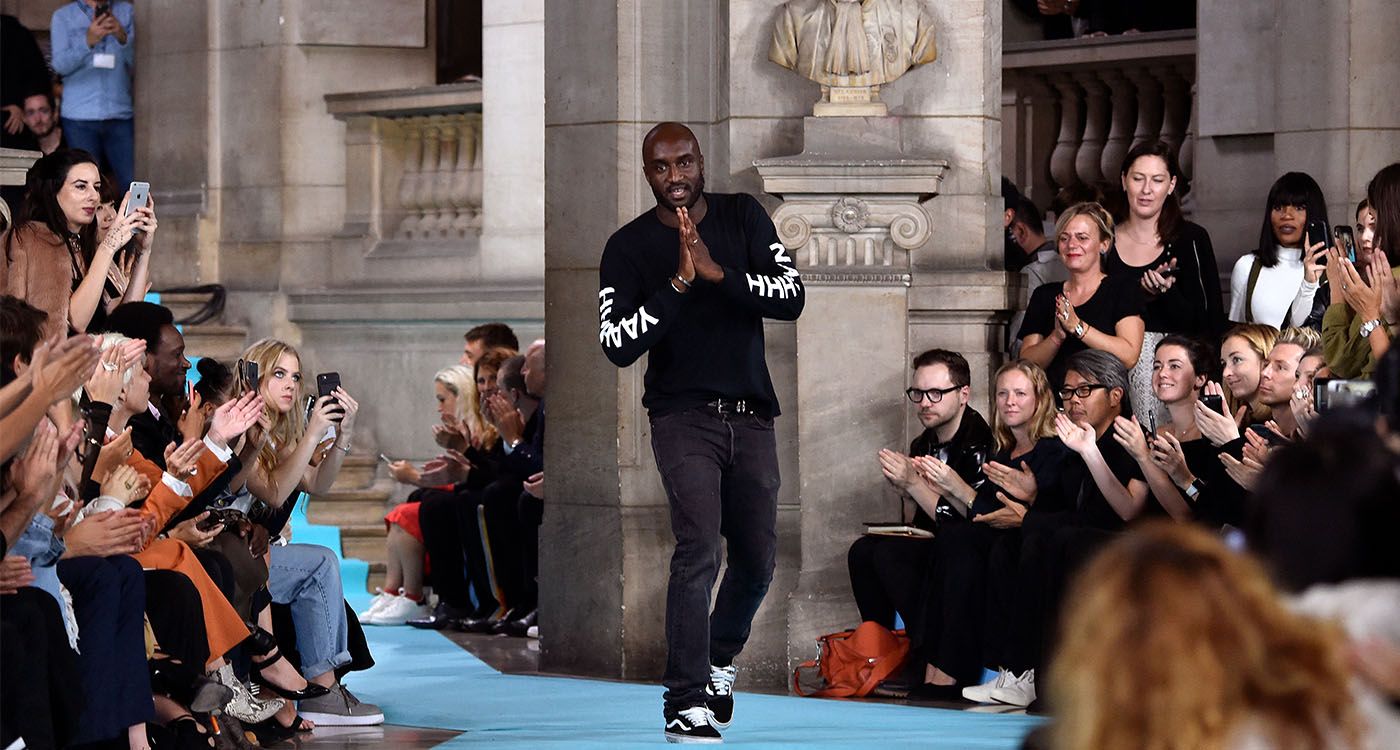
A book that vanishes with heat. A powerful idea that challenges memory, the status of the artwork and the fragility of messages. With this heat-sensitive manifesto, Virgil Abloh turns publishing into a creative and radical act.
In 2021, just months before passing, designer and artist Virgil Abloh unveiled one of his most surprising and powerful projects: a book printed with thermochromic ink designed to disappear when exposed to heat. A book that literally erases itself, not simply a metaphor for impermanence, but a tangible embodiment of the volatility of meaning. A bold publishing gesture, aligned with the avant-garde tradition, placing memory, medium and transmission at the heart of the reflection. A work created not to endure, not to be preserved, but to be experienced in the moment, or forever lost.
This manifesto, titled Figures of Speech, extends the eponymous exhibition dedicated to Abloh held at the Museum of Contemporary Art in Chicago in 2019. But in this special edition, published by DelMonico Books and the MCA, the book becomes an experiment. The plain white cover may seem deceiving. Inside are texts, images and reflections on art, fashion and modern visual culture. But this exclusive version is printed with heat-sensitive ink. Sunlight, the warmth of a hand, a radiator—or simply the passage of time—can make the content vanish. Pages fade. Words disappear. The manifesto becomes silence.
This wasn’t Abloh’s first provocative move. As artistic director at Louis Vuitton, founder of Off-White, trained architect, DJ and longtime collaborator of Kanye West, Abloh always walked the line between pop culture and its critique. He famously placed quotation marks around words—“SCULPTURE” on a handbag, “SHOELACES” on shoelaces—both labeling and subverting, desacralizing objects. He reimagined objects by highlighting their function, status or absurdity. But Figures of Speech took it further: he deliberately sabotaged the very possibility of archiving the work.
In an era where everything is stored, saved and backed up in the cloud, Abloh offered the opposite. A message you can’t keep. A book you can’t reread. An idea that either lives in the moment or disappears. This decision is all the more poignant given Abloh’s premature death from cancer in November 2021, at just 41. It lends the work a near-testamentary resonance. The man who redefined sneakers as cultural icons now turns to another symbolic object—the book—not to glorify it, but to challenge it.
Abloh’s erasable book also echoes the work of conceptual artists from the 1960s and ’70s—Marcel Duchamp, On Kawara, Dieter Roth, John Baldessari—who played with language, absence and disappearance as materials. Abloh follows this lineage but injects it into a world saturated with data and digital permanence. In a time when everything demands proof, screenshots, documents and archives, Abloh reminds us that the power of a message lies not in its preservation, but in its impact.
That’s the strength of this disappearing manifesto: it places the reader in a state of urgency. Reading becomes an act of presence. You don’t read it to shelve it or sell it later as a collectible (even though the object is now rare and coveted). You read it because it’s going to vanish. The experience is intimate. You can handwrite notes, photocopy pages or take pictures of the text before it fades—but all of that underscores one point: the content was never meant to last.
Some have seen this gesture as a critique of consumerism. Others, a metaphor for modern capitalism, where even art is disposable. Others see it as a reference to the racial and social realities Abloh navigated, as a Black man in a predominantly white industry, a creator whose presence had to be constantly asserted in a world eager to erase it. Perhaps it’s all of the above. Abloh never separated form from content. His art was conceptual, but deeply rooted in the visual codes of his time. He quoted James Baldwin, invoked hip-hop history, connected architecture and streetwear, contemporary art and marketing. He knew every object is also a sign—and every disappearance, a statement.
This erasable manifesto is therefore a boundary object. It resists archiving but is inevitably archived. It claims to vanish, yet its concept, rarity and impact give it permanence. That’s the paradox. Abloh’s artistic gesture pushes the limits of materiality. The more fragile an object, the more precious it becomes. The more it threatens to disappear, the more we strive to preserve it by photographing, documenting or narrating it, as we do here.
We must also read this as a critique of cultural fetishism. Today, art books are often luxury items, limited editions wrapped like relics. Abloh breaks this pattern. He offers an object meant to disappear. A book that won’t resist time, nor heat, not even touch. A book that dies to deliver a message.
At a time when NFTs promise digital eternity and AI seeks to immortalize style, Abloh restores vulnerability to art. He reminds us that what matters is not what lasts, but what moves us. What disappears, yet leaves a mark. Virgil Abloh’s gesture endures, like a manifesto written in the ink of time.


Comments